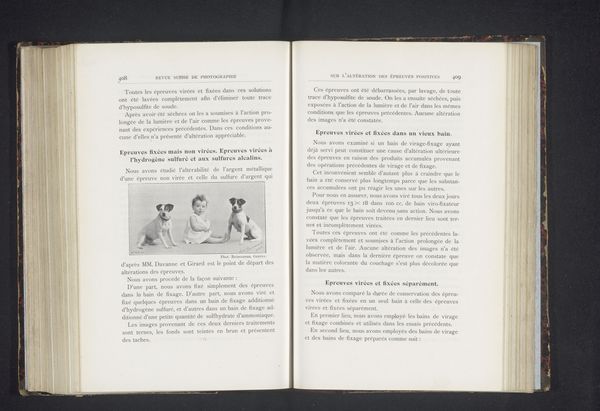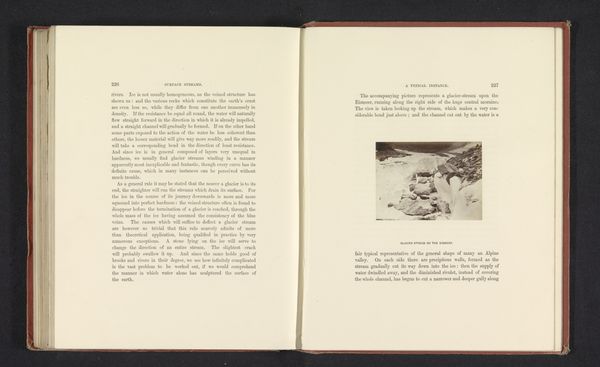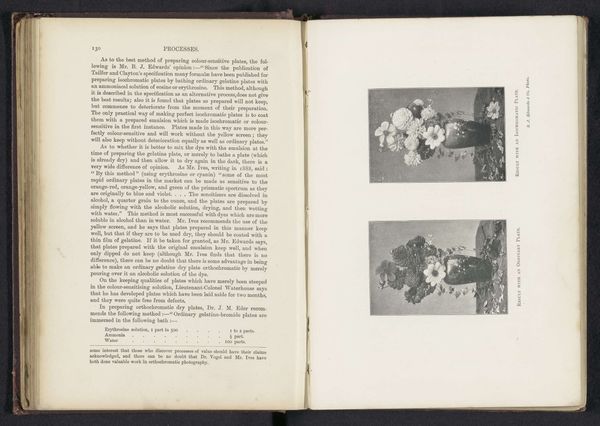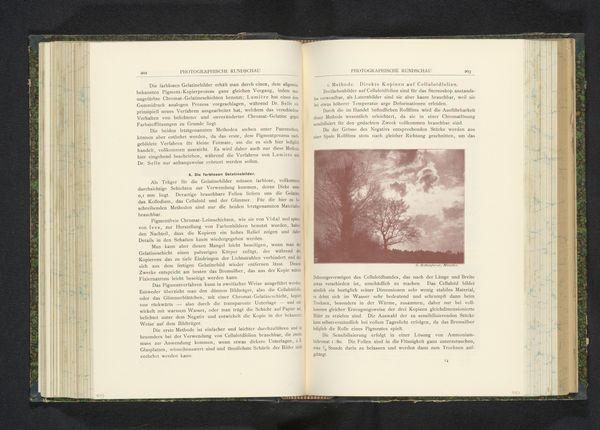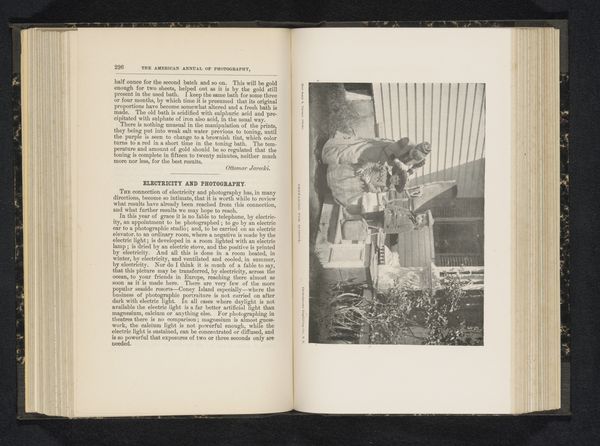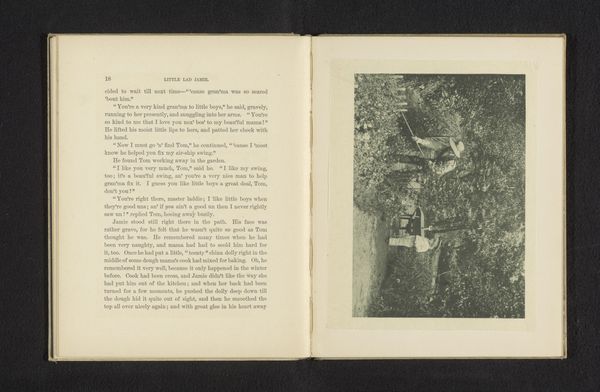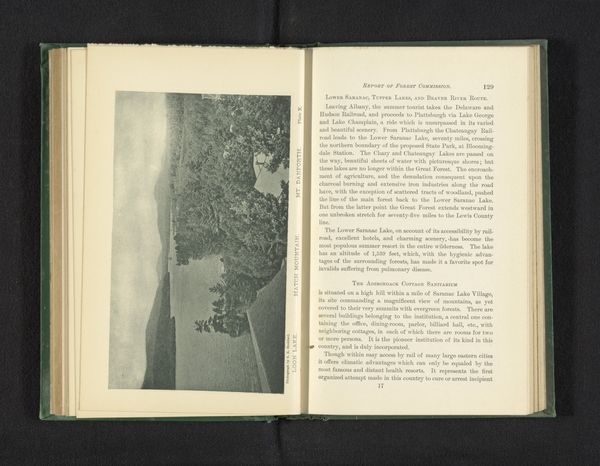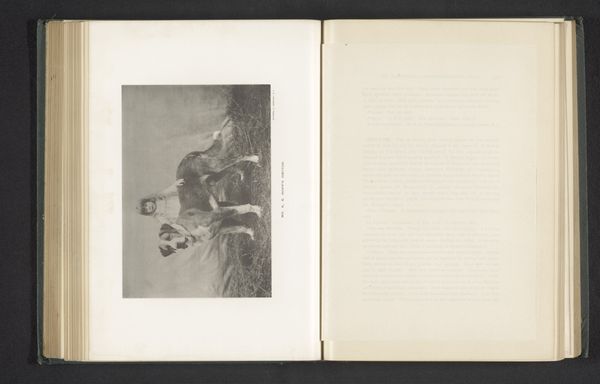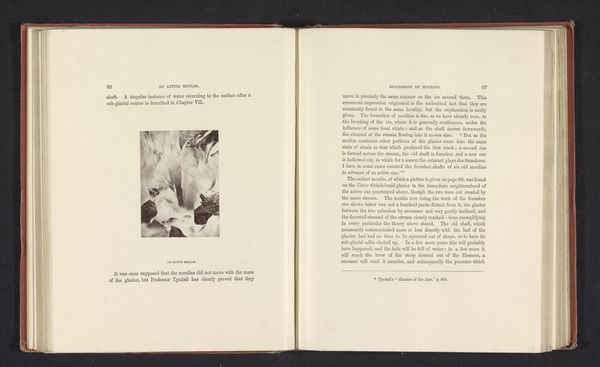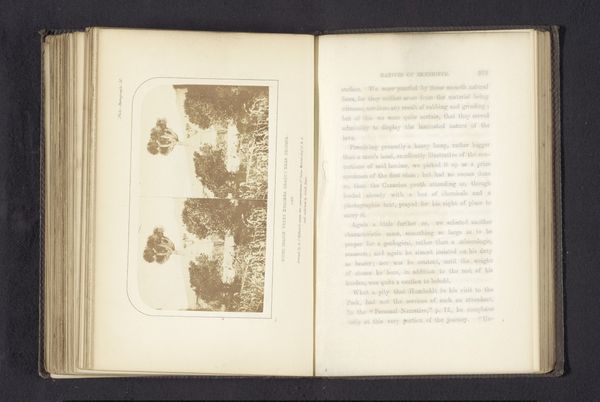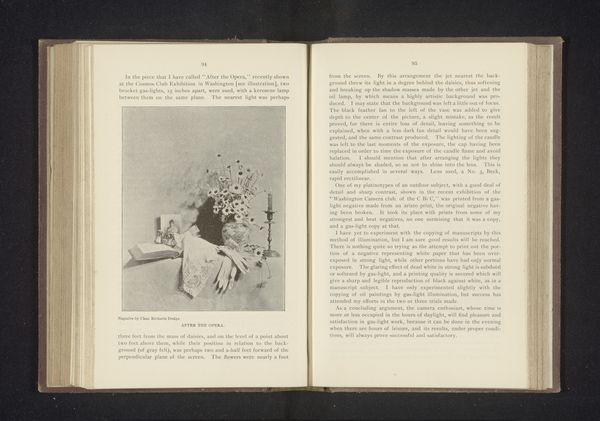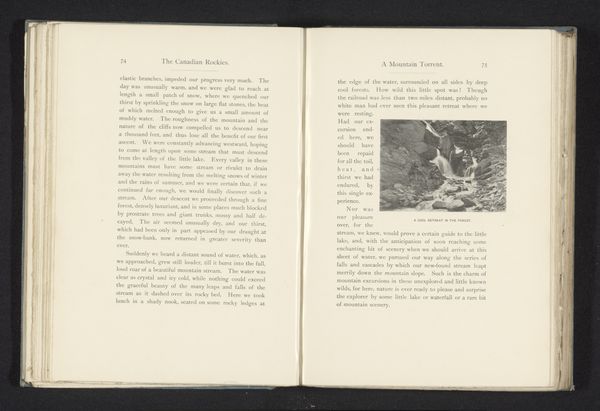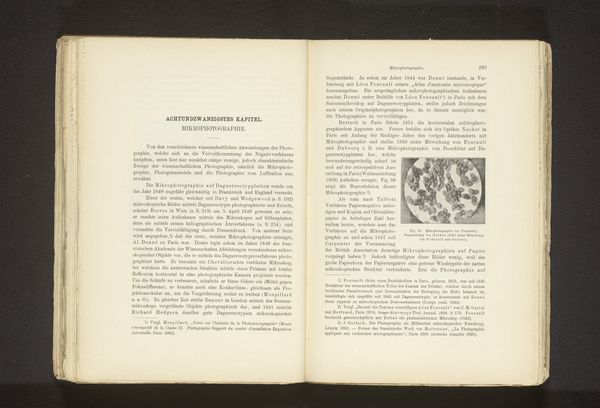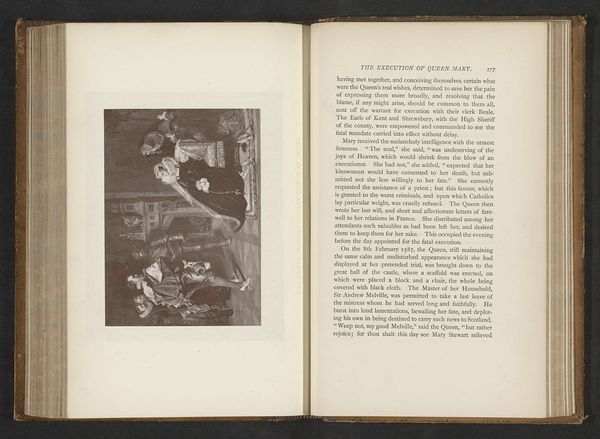
Dimensions: height 120 mm, width 90 mm
Copyright: Rijks Museum: Open Domain
Curator: We’re looking at “Stilleven van een boeket,” a gelatin silver print attributed to Charles Messaz, dating from before 1902. It’s an image of a floral arrangement photographed within the pages of a book. What strikes you immediately? Editor: There’s a fragility to the image. The muted tones create a melancholic and dreamlike quality. The composition is interesting. How the bouquet seems almost trapped by the surrounding text. Curator: Indeed. This still life aligns with a romantic or perhaps orientalist style prevalent then, but presented within the very industrial and progressive medium of photography and printing. The choice to depict it in a book underscores the importance of recording, and preserving, beauty amidst progress. It hints at tensions of the era between rapid development and the need to appreciate art and tradition. Editor: The contrast between the delicate floral subject and the rigid book form is visually engaging. Focusing strictly on form, it could also be understood as a study in textures - the smooth paper against the more varied textures of the roses. And of course it uses grayscale incredibly effectively. Curator: Contextually, the book itself would have been significant. Printed books were becoming more commonplace, spreading knowledge and shaping public opinion. The photograph's presence within it would then emphasize a desire to further refine that public sentiment. Also, it’s interesting to see this photographic "still life" embedded within printed text and presented as technical knowledge about the 'process'. Editor: I’m still drawn back to that grayscale. How limiting the tonal range can be incredibly effective. There is a subtle way to convey the romantic spirit of its day, that a saturated color version simply would have missed entirely. Curator: Looking closer, notice how Messaz positioned the shot, how the floral photograph exists in dialogue with information about developing photographs, thus adding meta commentary on photographic techniques and their cultural place during the late 19th century. Editor: Right, so it's not merely an isolated still life but it represents also the art form surrounding it! An insightful reminder to understand context. Curator: Ultimately, it exemplifies a period grappling with modernity, capturing the desire to enshrine transient beauty using the tools of the future. Editor: Yes, it’s both a historical artifact and a fascinating formal study. I find it incredible what historical circumstances and approaches to art making can affect our reception so dramatically.
Comments
No comments
Be the first to comment and join the conversation on the ultimate creative platform.
